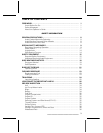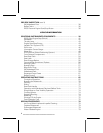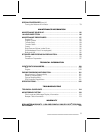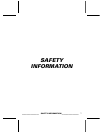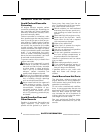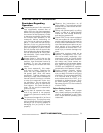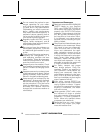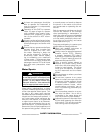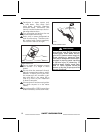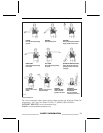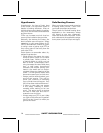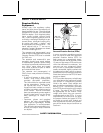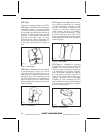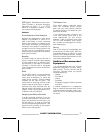
SPECIAL SAFETY MESSAGES
Do not exceed the payload or pas-
senger c a pa cities for your w a ter-
craft, whi ch are listed on the capac-
ity plate and in the specifications.
Overload ing can affect maneuv er-
ability, s tability and performance.
Also, heavy seas reduc e capacity. A
payload or person capacity plate is
not an excuse for failure to use c om -
mon sense o r good judgm ent.
Regularly inspect the PWC, the hull,
engine, safety equipment, a nd all
other boating gear a nd keep them in
safe operating condition.
Be sure you have the mi nimum re-
quired safety equipment, PFDs and
any additional gea r nee ded for your
cruise.
Check that all lifesaving equipment,
including fire extinguisher, is in
safe operating conditio n and eas-
ily accessible. S how all passengers
where this equipment is, a nd make
sure they know how to use it.
Keep an eye on the weather. Chec k
local weather broadcasts before de-
parture. Be alert to cha nging condi-
tions.
Keep accurate and up-to-date charts
of the boating area on boa rd. Before
getting underway, check water con-
ditions in the planned boating area.
Keep enou gh fuel on board for the
planned trip. Always verify fuel le ve l
before use and during the ride. Ap-
ply t he princi ple of 1/3 of the fuel to
reach your desti na tion, 1/3 to return,
and k eep 1/3 in reserve. A llow for
changes due to adverse weather or
other dela ys.
Operators and Pa ssengers
Read and understand a ll
WARNING/
SAFETY
labels on your Sea-Doo
PWC, your
OPER ATOR’S GUIDE
,all
other safety documents, and wa t c h
properly y our
SAFETY DVD
, b efore
operating. A lways keep in mind that
the “ƽ“ symbol, the Warning sym-
bol, identifies a n instruction which,
if not followe d, may cause serious
personal injuries inclu ding th e pos-
sibility of death.
Check loc a l and federal boating laws
applicable to the w aterways wh ere
youintendtouseyourwatercraft.
Learn the local rules of the road.
Know and understand the appli-
cable navigation system (such as
buoys and signs). K now the waters
in which the w atercraft is to be oper-
ated. Current, tides, rapids, hidden
obstacles, wakes and waves etc.
can affect safe operation. It is not
advisable to operate the watercraft
in rough or inclement weather.
For s afe ty reasons and proper
care , always perform “Daily Pre-
operation Checks” as specified in
your Opera tor’s Guide befo re op-
erating your watercraft. Keep the
safe ty lanyard a ttached to the o per-
ator’s PFD at all times and keep it
free from handlebars so that engine
stops if operator falls off.
After riding, remove DESS™ key
from its post to avoid unauthorized
use by children or others. If opera-
tor falls off the w atercraft and safety
lanyard is unattach ed, the w a ter-
cra ft will not stop
Never operate a PWC while under
the influence of drugs or alcohol
they slow reaction tim e and impair
judgement. It is also a Federal of-
fense. Allow only qualified drivers
to operate your watercraft.
Remember that sun, w ind, fatigue
or il lness ma y impa ir your judge-
ment and reactio n tim e.
10
_______
SAFETY INFORMATION
________




